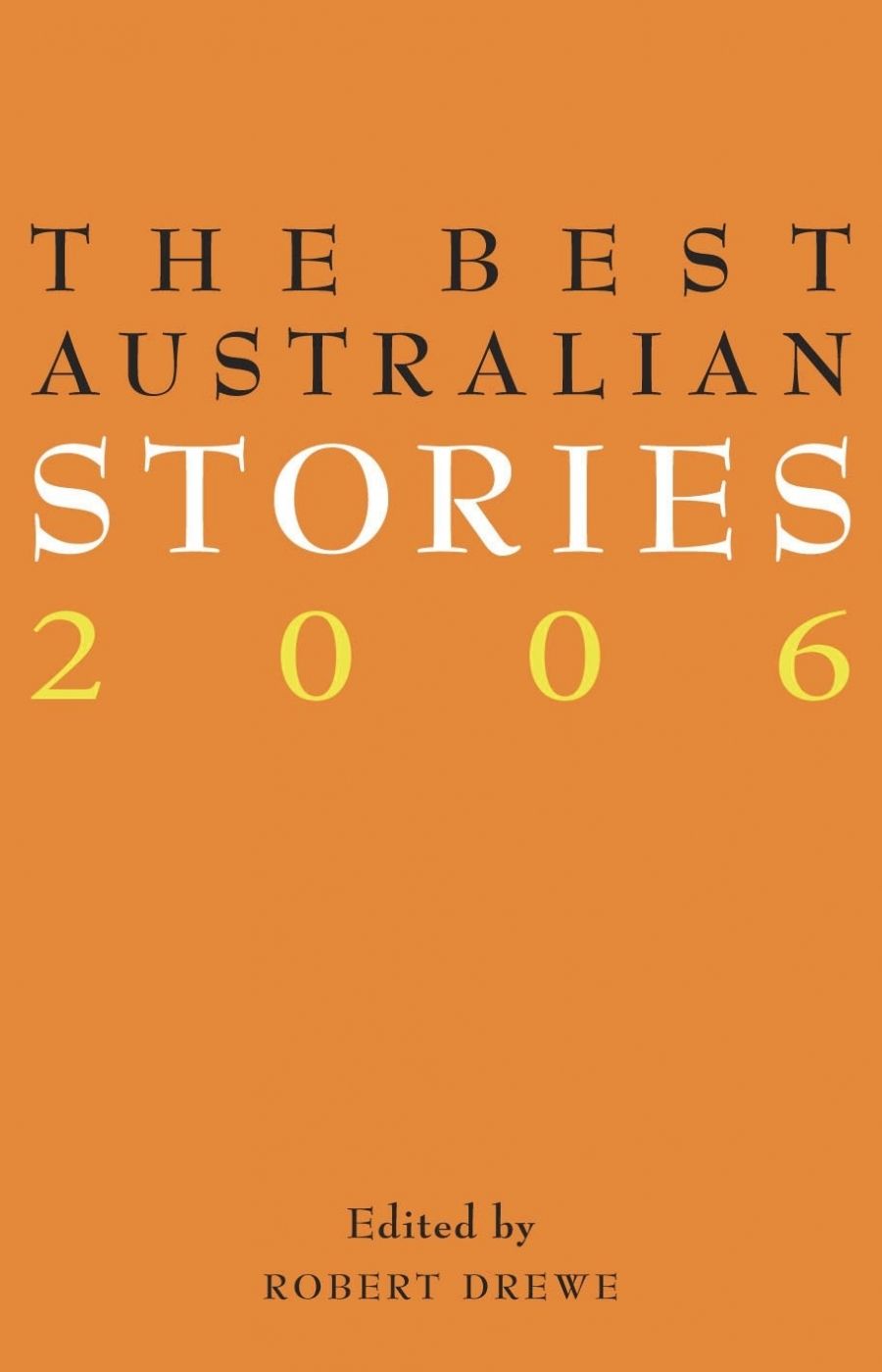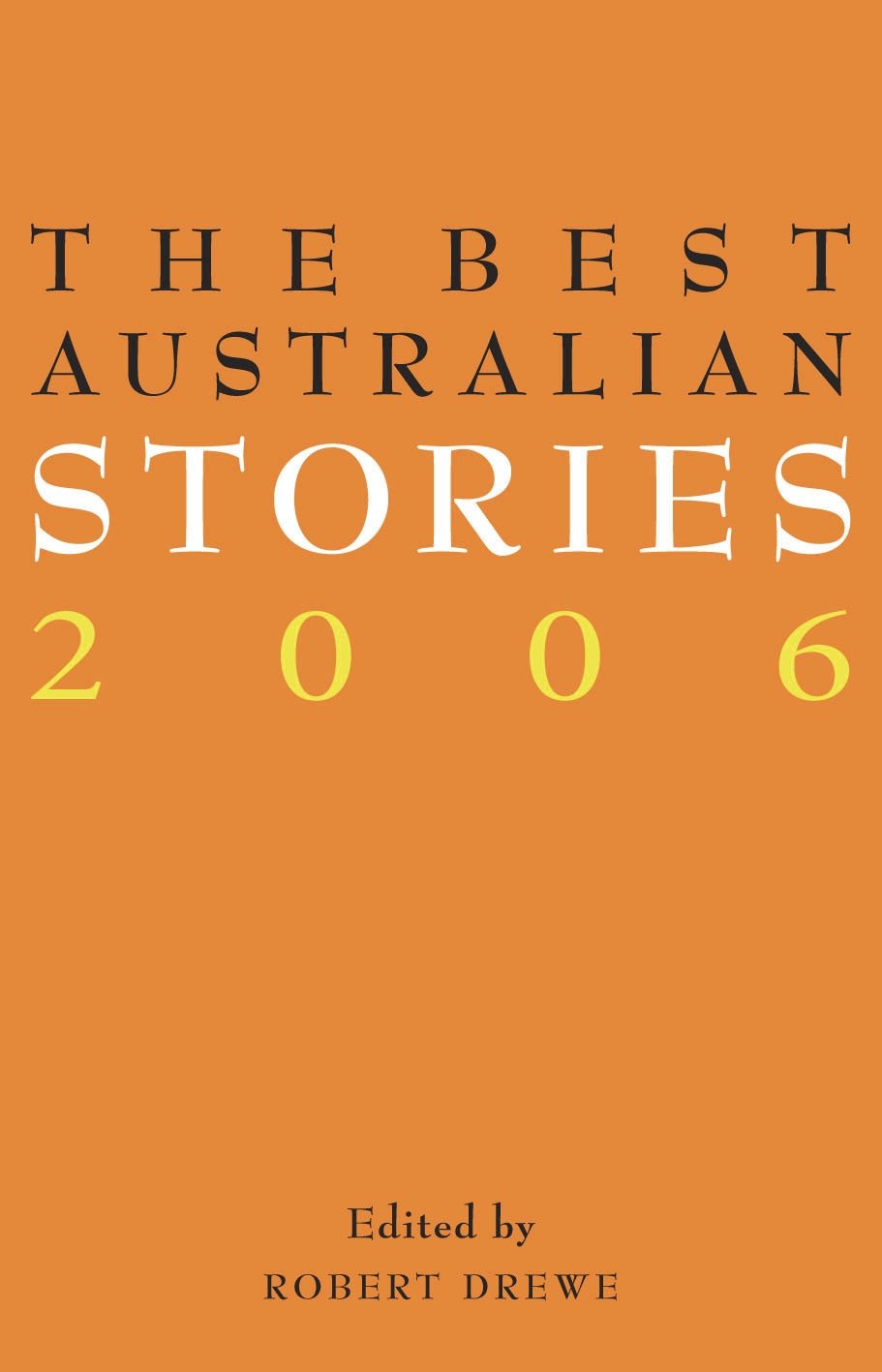
- Free Article: No
- Custom Article Title: Radical Drewe
- Review Article: Yes
- Article Title: Radical Drewe
- Online Only: No
- Custom Highlight Text:
Story collections, especially ones that appear annually, hold out shimmering, Brigadoon-like hopes for their readers: that they will offer a snapshot of the times; capture the collective unconscious of a nation and its writers; and, if selected by a well-known writer, reveal something profound about that author’s tastes. Most editors will tell you that the reality is often different. Their wish-list of writers may have published little to select from that year, and have nothing in the bottom drawer when asked; well-known authors, approached on spec, may offer work that is sub-par but which the editor now feels obliged to take. Thus an anthology may end up as more of a compromise than an ideal selection. On the other hand, some anthologies, such as Kerryn Goldsworthy’s Australian Love Stories (1996), Drusilla Modjeska’s Sisters (1993) or the first two volumes of the long-defunct Picador New Writing (1993–94), have managed to pull off precisely this era-defining gathering of collective energy, showcasing our nation’s literature at a high-water mark. In such anthologies, there is a joyful sense of momentum and confidence: the pieces speak to one another with an almost predetermined charge.
- Book 1 Title: The Best Australian Stories 2006
- Book 1 Biblio: Black Inc., $27.95 pb, 391 pp, 1863952705
- Book 1 Cover Small (400 x 600):

- Book 1 Cover (800 x 1200):

This is Robert Drewe’s first year – taking over from Frank Moorhouse and, before him, founding editor Peter Craven – as editor of Black Inc.’s annual Best Australian Stories. In his introduction, Drewe chooses, strategically, not to make any grand claims for the stories he has collected, beyond noting, for those worried by our novels’ fixation on historical subject matter, that most of these pieces are distinguished by contemporary settings. He also refuses to elaborate on his own editorial rationale. Instead, in speaking briefly about the craft of the short story and its enduring popularity with readers, he seems to assume that Best Australian Stories is now a fixture in the literary landscape, rather like the old Coast to Coast (1941–73).
This is strategic, because the pressure to elaborate is powerful. Since the halcyon 1980s and 1990s era of wildly experimental writing, Australian fiction has been subject to an ever-tightening régime of critical surveillance. In various calls to muster, spurred by our current political situation, Australian writers have been lectured for writing too much magic realism, too many novels about the past, too many mediocre novels, and not enough novels about politics and the present.
Arguably, this has had the effect of making many Australian novelists – as well as publishers – more cautious. Rather than being valued as evidence of cultural self-confidence and uniqueness, departures from realism are often regarded as affectation. In such a climate, many fiction writers appear to have felt the extra burden of having to value-add, becoming pseudo-historians, or writers-cum-activists – at the same time removing from their manuscripts any distinguishing feature that might be dismissed as too ‘literary’. It has seemed to me for some time that our current critical obsession with subject matter stands as a kind of supplement to what is missing, the demand that novelists write about ‘important’ topics growing more urgent the more they are encouraged to remove anything too ‘fictional’ from their fiction.
And yet, if I were to add my own complaints as a reader to this catalogue of concern about the Australian novel, they would be the opposite: a dwindling of idiosyncratic writing styles, and the diminishment, in a particular type of middle-brow literary fiction, of genuine psychological motivation. (It is the latter, I think – the replacement of any deep psychological logic by a combination of coyly alienated historicity and pantomimic kitsch – that is the criticism that can be more genuinely levelled against the historical novel. Although I have issues with Kate Grenville’s over-statement of the historical novelist’s empathy at the expense of historians’ expertise, I think it is actually The Secret River’s satisfying emphasis on psychological motivation – above and beyond its political relevance – that has justly brought so many readers to her book).
The approach Drewe has taken is old-fashioned, but, in this context, almost radical: he has searched assiduously through the year’s small magazines, solicited material from other writers and – without allowing himself to be pressured into coming up with any elaborate Zeitgeist-conjuring rationale – simply chosen the stories he likes best. His taste is eclectic. What is most striking about the stories in this collection, especially its excellent first half, is their imaginative reach and craftsmanship. They are by no means conservative, but they are also mercifully free of the post-coital ennui and self-conscious whimsy that often signify quota-filling ‘edginess’ in contemporary fiction. It is as if the short story writers here are revelling in the under-the-radar freedom the short story, in contrast to the novel, offers. Because they are not trying hard to please, and appear so absorbed by their subject matter, they demonstrate a confidence and energy that have not lit up an Australian anthology for some time.
The spread of writers in The Best Australian Stories 2006 is what one would hope for: it showcases the energy of writers at the beginnings of careers as well as new work (thankfully, rarely parts of novels-in-progress) by established authors. Among the newer writers, it is particularly pleasing (as one of the judges) to see Will Elliott, author of The Pilo Family Circus, winner of this year’s inaugural ABC Fiction Award. ‘Ain’t No Ordinary Ham’, a story about some sinister meat, is one of the star turns of Drewe’s collection: it is reminiscent of the character-driven magic realism of Tom Flood, but also, with a certain textual naïveté, summons the weird energy of Edgar Allan Poe. Patrick Holland’s ‘Flame Bugs on the Sixth Island’ is a fine piece of writing; a study in memory, whose lucidity and refined male yearning reminded me of one of James Bradley’s rare short stories. Other early-career writers include Chris Womersley (‘The Shed’, another disturbing story with fantasy elements) and Shane Strange, whose clear-eyed ‘Requiem’ closes the collection.
The standout story among this group, and probably – against stiff competition – the entire collection, is Patrick West’s ‘Nhill’. I have long admired West’s stories, their narrative sensibility somewhat eccentrically modelled on Gerald Murnane’s, and often narrated by uxorious, repressed men, who dwell on the minutiae of their circumscribed lives (carpentry, for example, or forestry maps), as if compulsively recalling a dream. At a certain point, their alienated intimacy is transformed into an affecting tenderness, as if invoking the obsessive inner poetry of private men. In ‘Nhill’, a husband recalls a trip to the oddly attentive landscape of the Little Desert with his wife. ‘A single duck’s cry,’ he tells us, ‘carried to our ears with almost no volume at all, the smallest increment imaginable before deafness begins.’ This exquisite story, in which narrative time is held in suspension, would be perfect but for its last line.
Another notable feature of the stories in this collection is their satisfying attention to psychological motivation. Among the established writers, it is good, as always, to find Venero Armanno, a male writer unafraid of romance and lushness. His story, ‘I Feel So Strong’, is written in the voice of a dead man observing the rites of his own autopsy. While its narrative direction peters out somewhat, the boldness of this story’s voice is startling. Also notable is Gerard Windsor’s psychological narrative, ‘Another Man’, a revealing insight into a middle-aged man’s mind as he thrashes out the consequences of an affair and faces up to his own limitations: a little tilt at the end lifts the story to another plane. Catherine Ford, Tony Birch and Frank Moorhouse also offer smart, insightful stories.
Other stories offer a welcome return to the fantastical that Australian writers do so well; knowing, yet free of the undergraduate smugness that mars so much short American ‘postmodern’ fiction. Eva Sallis’s speculative ‘Fox Unpopuli’ describes a fox invasion of Tasmania and the public hysteria it unleashes, turning into an urgent myth about Australian fragility and paranoia. Its visceral sensuality is gripping. ‘A fox could gnaw at the heart of this country,’ Sallis writes, ‘suck it back to white gristle and shit it out in hairy scat.’ Kim Scott’s creepy ‘Asleep’ is also a compel-ling, dark fantasy which – like Benang (1999) – bears a large historical freight. I hope it holds the germ of a book.
It is not surprising that so many of the stories in this excellent collection inhabit the minds of Australian men, since Drewe’s own short stories are frequently mature, sensual explorations of this territory. But this is a wide enough selection to allow one to find other paths through it, and another reader, focusing on the tenderness of Margaret Barbalet’s observations on living in the United Arab Emirates (‘Running from Right to Left’) or Fiona McGregor’s ‘Indelible Ink’, might come away with a different impression. What does remain, after reading this anthology, is a hopeful and expansive sense of talent, diversity and reinvigoration.


Comments powered by CComment